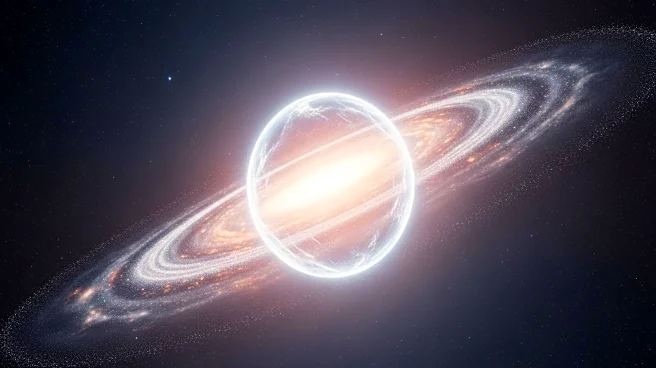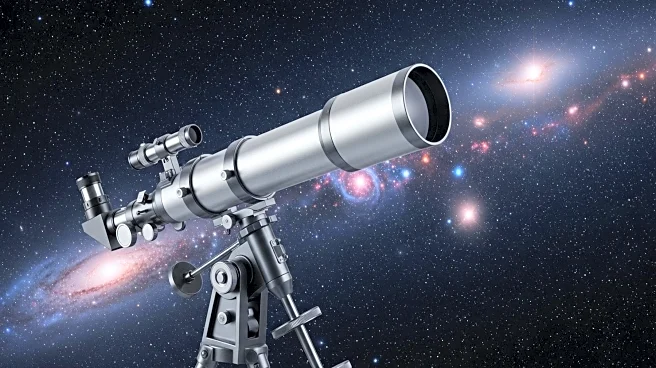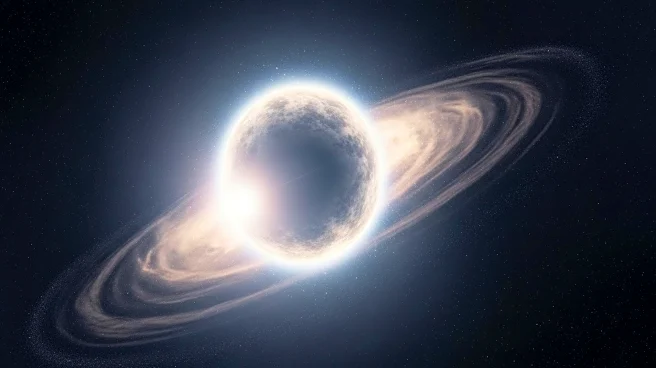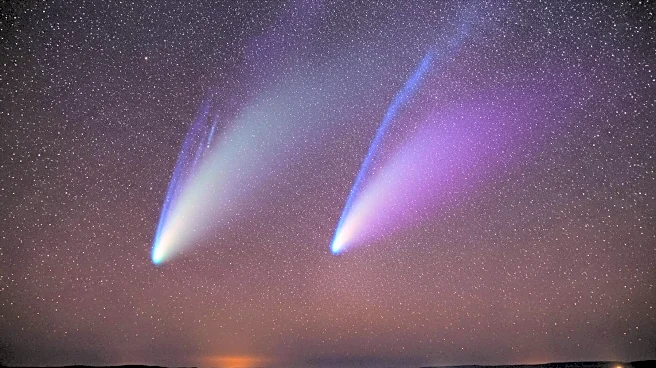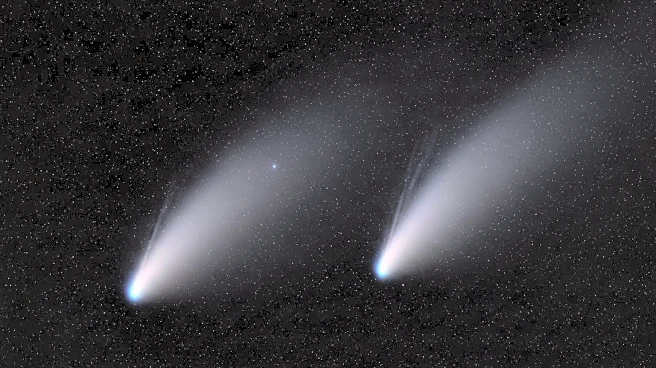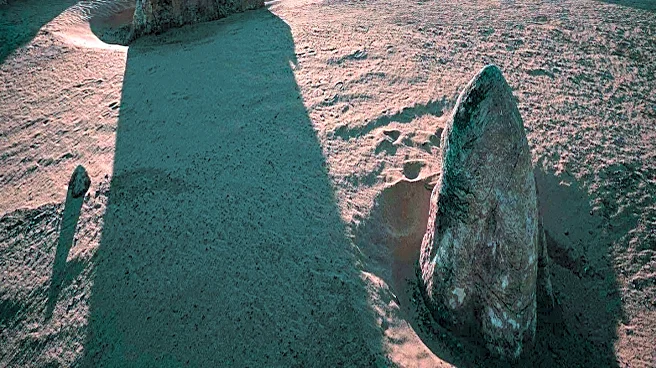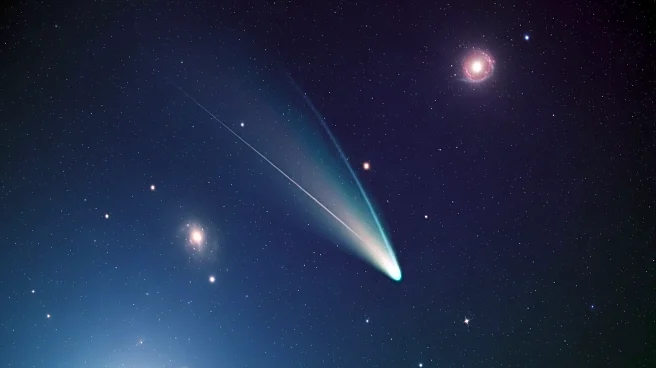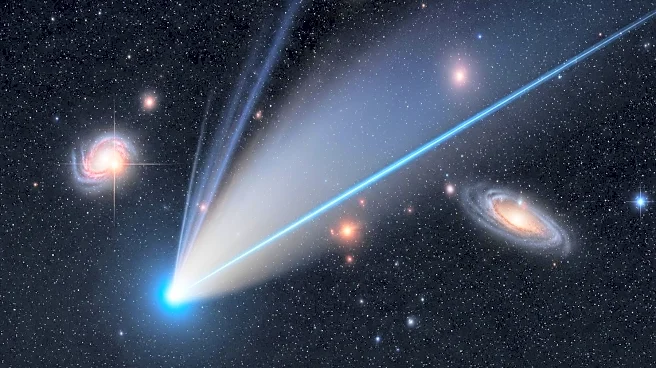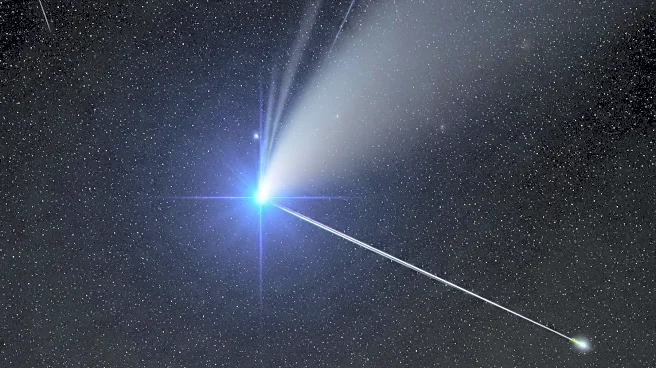What is the story about?
What's Happening?
Astronomers have successfully captured an image of a protoplanet, named WISPIT 2b, forming within the dusty disc surrounding a distant star. This discovery was made using the Magellan Telescope in Chile and the Large Binocular Telescope in Arizona. WISPIT 2b, a gas giant approximately five times the mass of Jupiter, is located 437 light-years from Earth. The planet is still in its formative stage, carving out a gap in the circumstellar disc as it orbits its star. This marks the first direct observation of a planet forming in such a gap, a phenomenon previously theorized but not visually confirmed. The team also detected a second potential planetary body within another gap, though its existence is yet to be confirmed.
Why It's Important?
This discovery provides significant insights into planetary formation processes, offering direct evidence of how planets can form within the gaps of circumstellar discs. Understanding these processes is crucial for comprehending the early stages of planetary systems, including our own Solar System. The observation of WISPIT 2b supports the theory that planets influence the structure of their surrounding discs, potentially leading to the formation of new celestial bodies. This finding could enhance our understanding of the dynamics of young planetary systems and the conditions necessary for planet formation.
What's Next?
Further observations and studies are likely to be conducted to confirm the existence of the second potential planetary body and to gather more data on the formation processes of WISPIT 2b. These studies could involve using different wavelengths and advanced imaging techniques to gain a deeper understanding of the protoplanetary environment. The findings may prompt additional research into other circumstellar discs to identify similar phenomena, potentially leading to new discoveries in the field of exoplanetary science.
AI Generated Content
Do you find this article useful?
